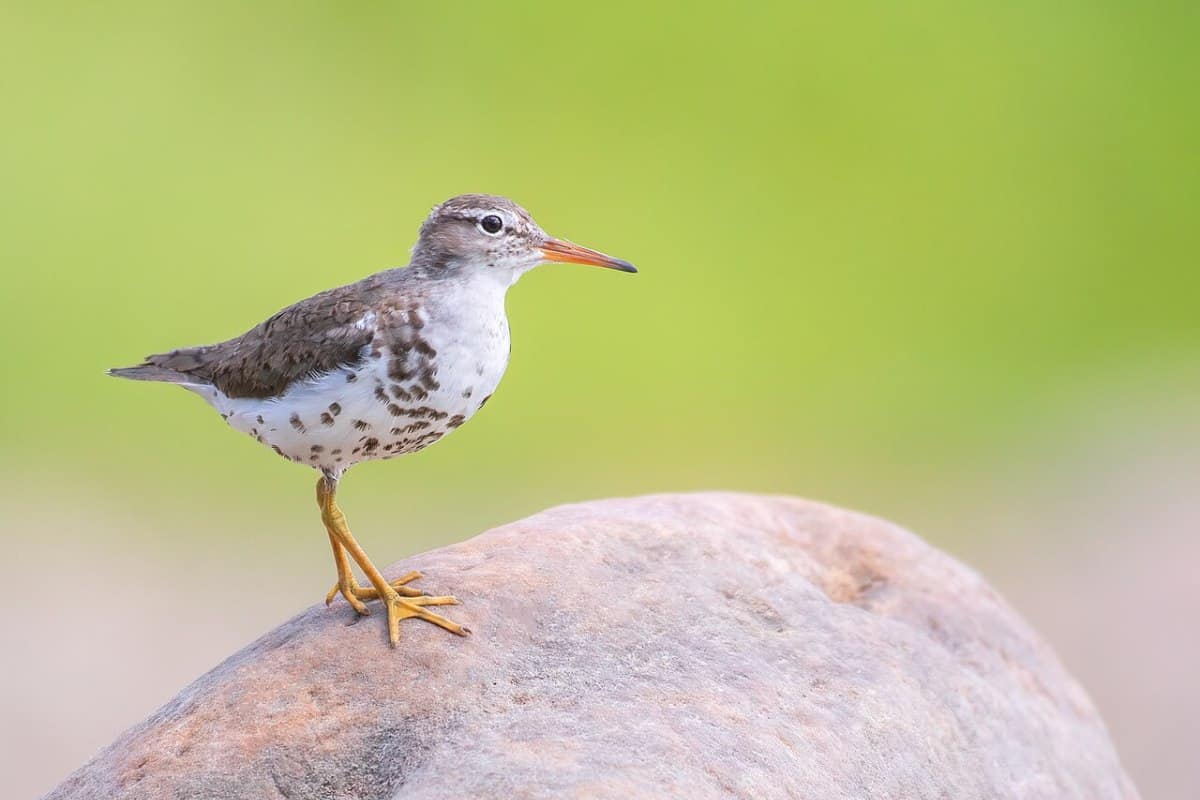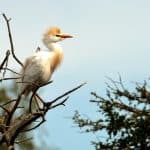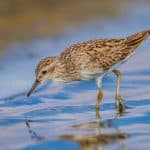Common Name: Spotted Sandpiper
Scientific Name: (Actitis macularia)| Size | Diet | Range in Hawaii | Status in Hawaii |
|---|---|---|---|
| 7 in. - 9 in. | crustaceans, aquatic insects, worms and tiny fish | Kaua'i, O'ahu, Moloka'i, Maui, Kaho'olawe, and Big Island | Least Concern |
The Spotted Sandpiper, also known as Actitis macularia, is a small shorebird species native to North and South America. While the species is not native to Hawaii, it has been known to occasionally visit the islands as a non-breeding visitor and vagrant. With its unique appearance and distinctive behavior, the Spotted Sandpiper is a fascinating bird species that has captured the attention of birdwatchers and avian enthusiasts worldwide.
In this article, we will explore the world of the Spotted Sandpiper, its unique characteristics, and its occasional presence in Hawaii.
Spotted Sandpiper
Appearance
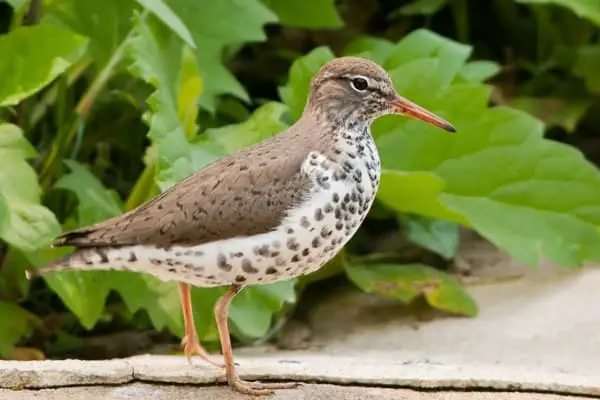
The Spotted Sandpiper is a charming shorebird known for its distinctive appearance. It’s a petite bird, measuring approximately 7 to 9 inches (18 to 23 centimeters) in length. Its plumage is a delightful blend of earthy tones, featuring brownish-gray upperparts and white underparts and its slender legs are a pale yellowish hue.
What sets this bird apart is the striking black spots that speckle its white breast and belly. Its wings reveal a bold white stripe during flight, adding to its visual appeal. This unique size and spotted pattern combination makes the Spotted Sandpiper a true standout along the water’s edge.
Diet
The Spotted Sandpiper boasts a fascinating dining style that’s ideally suited for its shoreline habitat. With a menu primarily consisting of aquatic and terrestrial invertebrates, it’s a skilled forager. Its culinary delights include small crustaceans, aquatic insects, worms, and even tiny fish.
Nesting
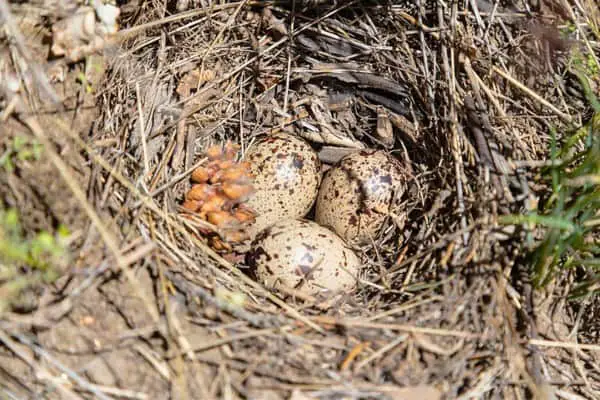
These birds practice a unique role reversal in the avian world. Unlike many bird species, it’s the females that take the lead in courtship and territorial defense, while males handle the essential task of incubating the eggs.
Spotted Sandpipers typically nest in a scrape on the ground, often near water bodies like streams or ponds. The female lays a clutch of eggs, usually containing four spotted beauties. Once the eggs are laid, her role is largely complete, and she may even depart to find another mate and lay additional clutches elsewhere.
The attentive male, on the other hand, takes charge of incubating the eggs and rearing the chicks when they hatch. This reversal of roles is a fascinating adaptation that allows Spotted Sandpipers to thrive in their wetland habitats while challenging traditional gender roles in the bird kingdom.
Behavior
What truly sets the Spotted Sandpiper apart is its gender role reversal. Unlike many bird species where males display vibrant plumage and court females, Spotted Sandpipers flip the script.
Spotted Sandpipers are known for their distinctive teetering walk along the water’s edge. As they patrol the shoreline, their characteristic bobbing motion gives the impression that they’re hesitating between taking a step and staying put, creating an endearing and comical spectacle for birdwatchers.
Their spotted plumage is a delightful camouflage, helping them blend into their rocky or sandy habitats. Their sharp, piercing calls add an auditory dimension to their playful behavior.
Habitat
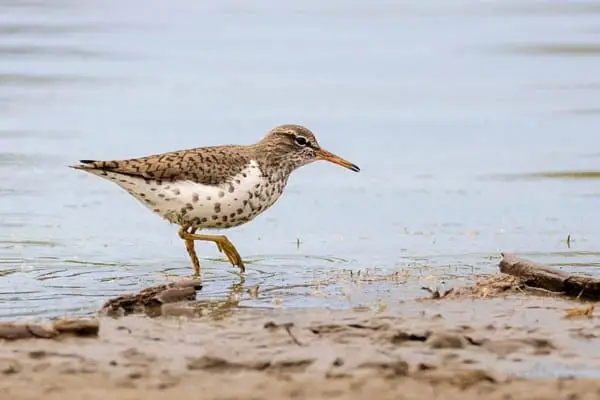
The Spotted Sandpiper is a habitat-adaptable bird, often seen along freshwater lakes, rivers, and coastal estuaries. Its teetering gait and keen hunting skills make it a master of the waterside realm, showcasing nature’s ability to thrive in diverse landscapes.
Range
The Spotted Sandpiper is a non-breeding visitor to Hawaii, considered a vagrant species. While they primarily breed in North America and winter in Central and South America, their presence in Hawaii is occasionally confused with the Common Sandpiper, a Eurasian counterpart.
Confirmed sightings of Spotted Sandpipers have been recorded on multiple Hawaiian Islands, including Kaua’i, O’ahu, Moloka’i, Maui, Kaho’olawe, and Hawai’i Island. These records occur mainly during fall migration and overwintering, with varying arrival and departure dates.
Conservation Status
The Spotted Sandpiper (Actitis macularia) is classified by the International Union for Conservation of Nature (IUCN) as a species of “Least Concern.” This designation suggests that, at a global level, the population of Spotted Sandpipers is relatively stable, and they are not facing imminent threats of extinction.
Interesting Facts
1. Solo nesters
Spotted Sandpipers are often solitary nesters, meaning they don’t nest in colonies like many other shorebirds. Each pair establishes its own territory along the water’s edge.
2. Distinctive white eyebrow
They have a striking white eyebrow that contrasts with their brownish plumage. This feature is especially noticeable when they are in flight.
3. Vocal variety
They have a diverse range of calls, including sharp, high-pitched peeps and whistles. These vocalizations are often used for communication during courtship and territorial disputes.
4. Nocturnal migrators
During migration, Spotted Sandpipers are known to migrate at night. They use the stars to navigate, and their nocturnal flights are a remarkable adaptation to avoid daytime predators.
5. Cultural significance
Spotted Sandpipers are not only fascinating from a biological perspective but also have cultural significance in indigenous communities. They feature in the traditions, stories, and art of various Native American cultures.
Frequently Asked Questions
1. Are Spotted Sandpipers good swimmers?
Despite being shorebirds, Spotted Sandpipers are surprisingly strong swimmers. They use their webbed feet to navigate through shallow water, which is useful for both foraging and evading predators.
2. How long do Spotted Sandpipers live?
Spotted Sandpipers can live for several years, with some individuals known to reach ages of up to 10 years or more in the wild.
3. Do Spotted Sandpipers change their plumage throughout the year?
Yes, Spotted Sandpipers undergo seasonal plumage changes. During the breeding season, their plumage features more distinct spots, especially on their underparts. In the non-breeding season, these spots become less pronounced.
4. Can you keep Spotted Sandpipers as pets?
No, keeping wild birds, including Spotted Sandpipers, as pets is generally illegal in many countries and can be harmful to their populations. These birds are best appreciated in their natural habitats.
5. How can I help conserve Spotted Sandpipers and their habitats?
You can contribute to the conservation of Spotted Sandpipers by supporting organizations that focus on wetland conservation, promoting responsible land use, and advocating for policies that protect critical habitats.
